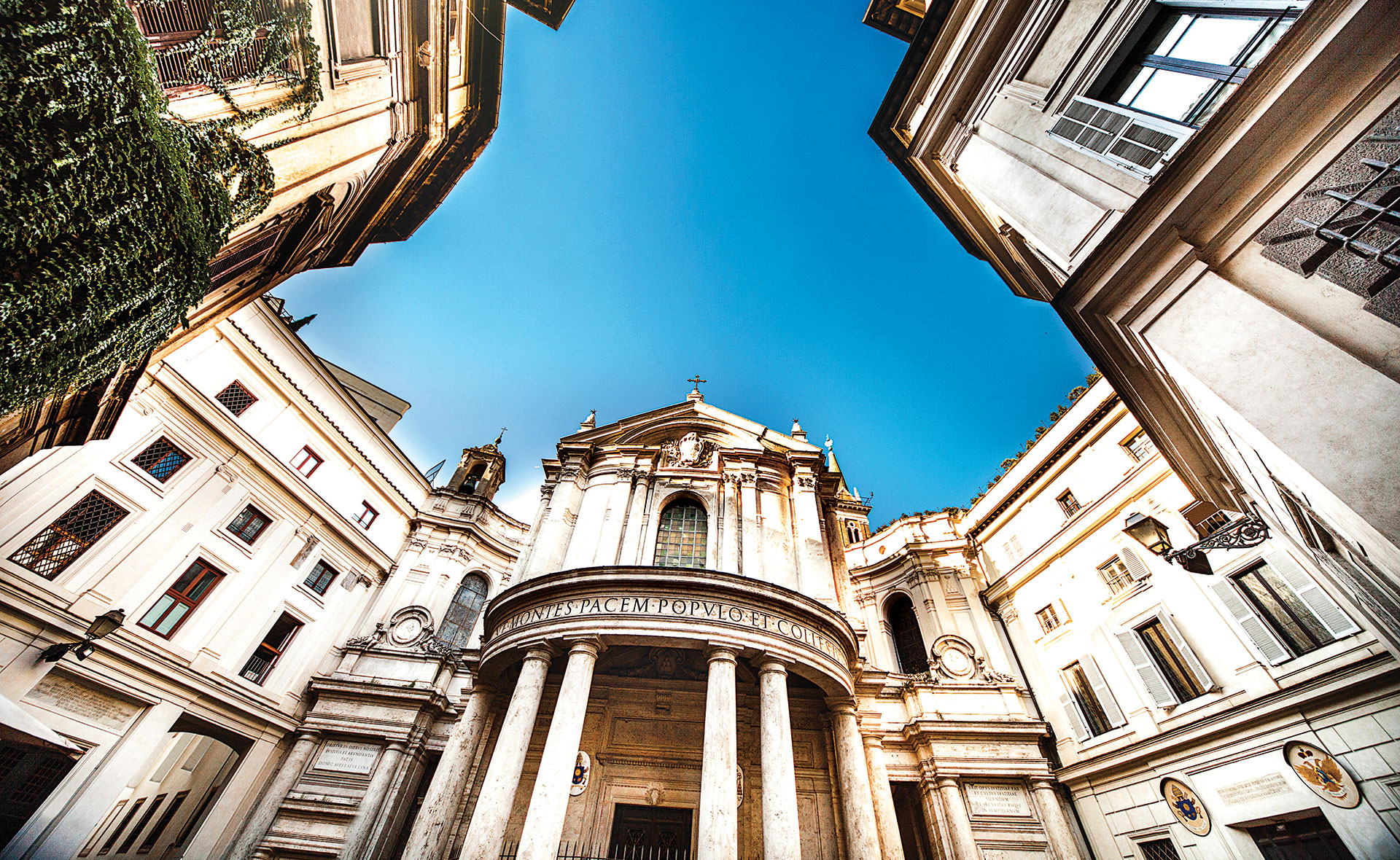Church of Santa Maria della Pace: an architectonic complex that hosts the works of Raphael and Bramante.

The Church of Santa Maria della Pace is a precious example of Roman Baroque architecture, located next to the cloister of Bramante, not far from Piazza Navona. It was built on the foundation of an old chapel dedicated to Saint Andrea de Acquaricariis. Construction began in 1482 under the orders of Pope Sixtus IV and ended under Pope Innocent VIII, who dedicated the church to “Santa Maria della Pace” to thank the Virgin for the Treaty of Bagnolo (1484), which ended the War of Ferrara, having started two years earlier. The dome, designed by Antonio da Sangallo the Younger, was completed in 1520 and decorated in 1641 by Francesco Cozza. The frescoes painted on the dome have been destroyed and today it is only possible to admire the evocative representation of the Eternal Father, filling the inside of the lantern above.
Under the orders of Pope Alexander VII Chigi, the church was renovated in 1655 by Pietro da Cortona. The restoration work involved the two-tiered Baroque façade, preceded by the addition of a semi-circular pronaos formed by paired doric columns.
The small square in front of the church was also remodelled, with the demolition of some buildings. The square thus assumed a trapezoidal shape thanks to the construction of the concave wings that unite the church with the buildings in the square. Still today the main entrance is the original gate built in the fifteenth century.
Inside the church, along the nave there are four chapels decorated by artists such as Raffaello Sanzio, Rosso Fiorentino, Carlo Maratta and Orazio Gentileschi.
On the high altar there is the icon of the Madonna della Pace: legend has it that a drunken soldier hit this image with a stone and it began to bleed. Santa Maria della Pace is also home to Roman’s oldest pipe organ. The cloister of the church was the first work that Donato Bramante carried out in Rome, commissioned by Cardinal Oliviero Carafa, and today hosts important modern art exhibitions.
